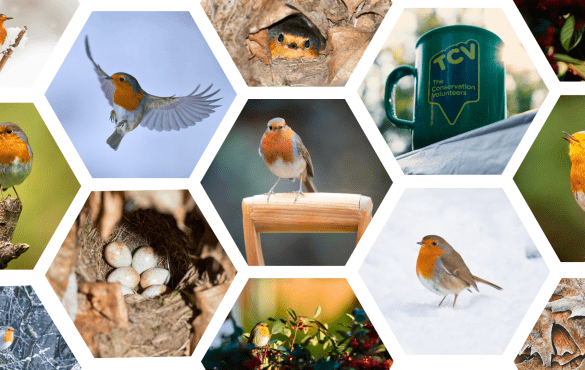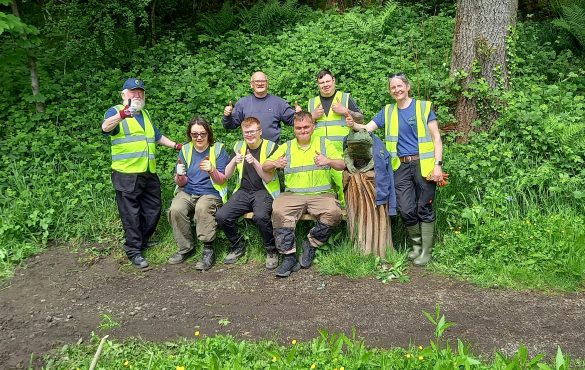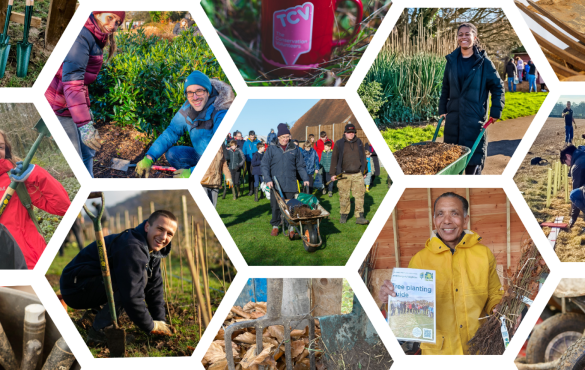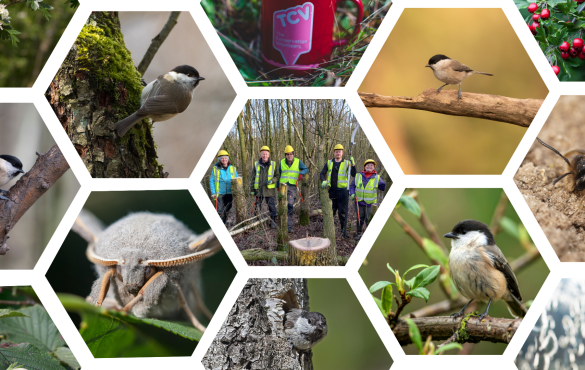Ruth Bradshaw has been a passionate volunteer with TCV Croydon since March 2011. With nearly 15 years of experience, Ruth has dedicated countless hours to conservation efforts, helping to preserve and enhance Croydon’s beautiful green spaces. Her journey with TCV has not only deepened her connection to nature but also inspired her to share her experiences through her writing.
By Ruth Bradshaw, TCV Volunteer
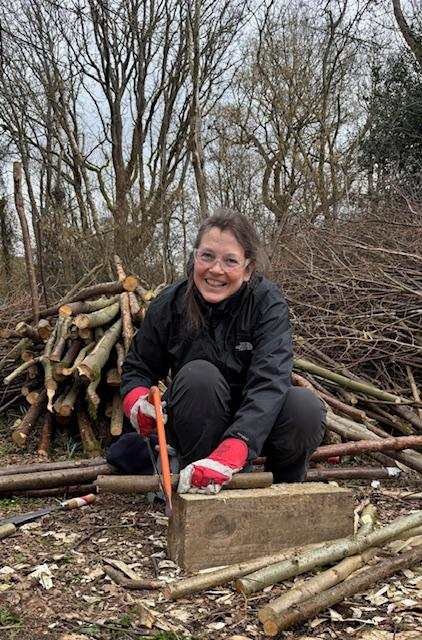
Many people think of Croydon only in terms of the concrete and tower blocks which dominate its town centre, but the borough is also blessed with numerous beautiful green spaces. I have got to know many of these well since I started volunteering with TCV Croydon in March 2011. On my first outing with BTCV as it was then known we went to Addington Hills, an area of heathland and steep-sided wooded valleys, a type of habitat that is unusual in London and very different from the woodlands and meadows where we do most of our other volunteering.
The Beauty of Addington Hills
I’d been to Addington Hills before to take in the panoramic view of the capital from its viewing platform and enjoy the sight of the heather which covers part of the heath and usually blooms here in profusion in the summer. But it is only since getting involved with TCV that I’ve come to appreciate just how much effort goes into caring for places like this. Our tasks here often involve removing some of the trees which have self-seeded to allow the heather to flourish. Without this work, the quick-growing species, like birch, would soon dominate. It is always very satisfying to spot shoots of young heather returning in areas we’ve cleared in previous years, even though it sometimes feels a little strange to be removing trees when so much of our other work is about helping them to grow.
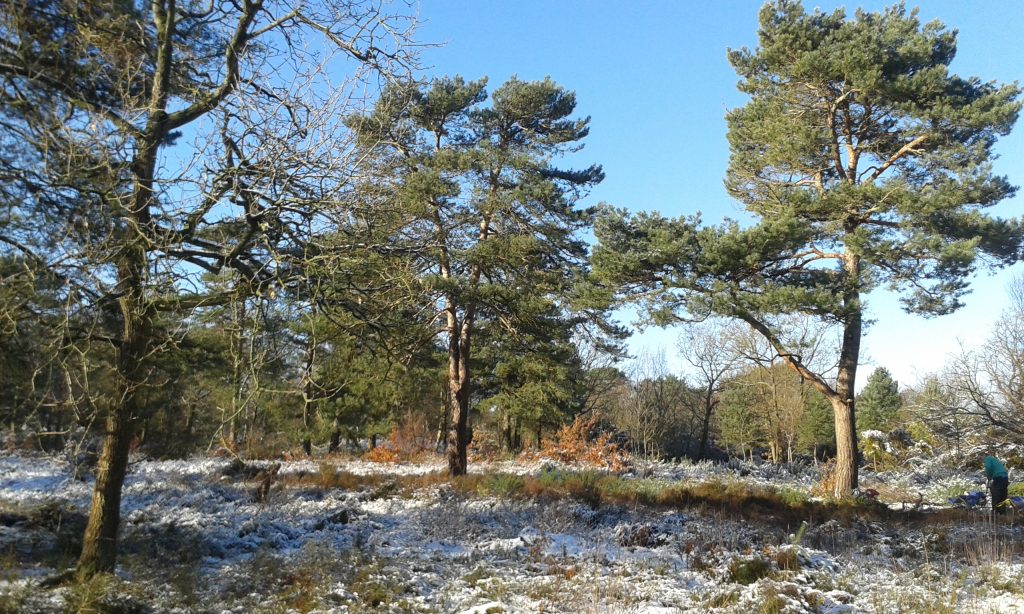
Learning Through Conservation Volunteering
The fact that places that look “wild” often need to be carefully managed is just one of the many things I’ve learnt since taking up conservation volunteering. I’m also developing a much better understanding of the species that live alongside us in cities and about the impact of humans on other species. As well as learning a lot about wildlife, I’ve met lots of amazing people and made new friends. Conservation volunteering has also enabled me to connect with the land in a way that can be hard for urban dwellers and to feel a sense of connection to the previous generations who cared for these places. Many of our tasks – hedge-laying, pond clearing, felling and occasionally planting trees – vary with the seasons, as such work always has.
The Joy of Coppicing
Over the autumn and winter, we spend much of our time coppicing, one of my favourite tasks. This involves periodically cutting trees down to nearly ground level after which they will regenerate by sending out new shoots which will themselves be coppiced in later years. Each year, we coppice a different coupe (section) of the hazel trees in two woodlands right on the edge of London – Devilsden Wood in Happy Valley and King’s Wood in South Croydon. Each coupe is cut back every 10-15 years and our last task at the end of each winter is to fence off the coupe that has just been coppiced to create an exclosure, so-called because the objective is to keep the deer out and allow the new growth to flourish. Returning to the same woods year after year provides a chance to see the cycles of regrowth created by coppicing. It is wonderful to see a coupe that was filled with bare stumps at the end of the winter transformed by lush new life when we start coppicing the following autumn.

Connecting with History Through Coppicing and Pollarding
Both coppicing and pollarding which involves cutting trees above browsing level so regrowth can take place even when there are grazing animals among the trees are long-established practices. They are activities that our ancestors undertook for generation after generation until only a century or two ago, and it is while we are working in the woods each winter that I feel closest to those who have looked after this land before us. The activities we undertake are not so different from those described in Thomas Hardy’s novel The Woodlanders, and I often like to think of as modern woodlanders. The big difference, of course, is that none of us rely on these woods for our livelihoods anymore, although we do still try to make as much use as we can of the trees we chop down. Straight trunks of a suitable length and thickness are kept for use as fence stakes, bean poles or as binders for hedge-laying on other TCV projects in London.
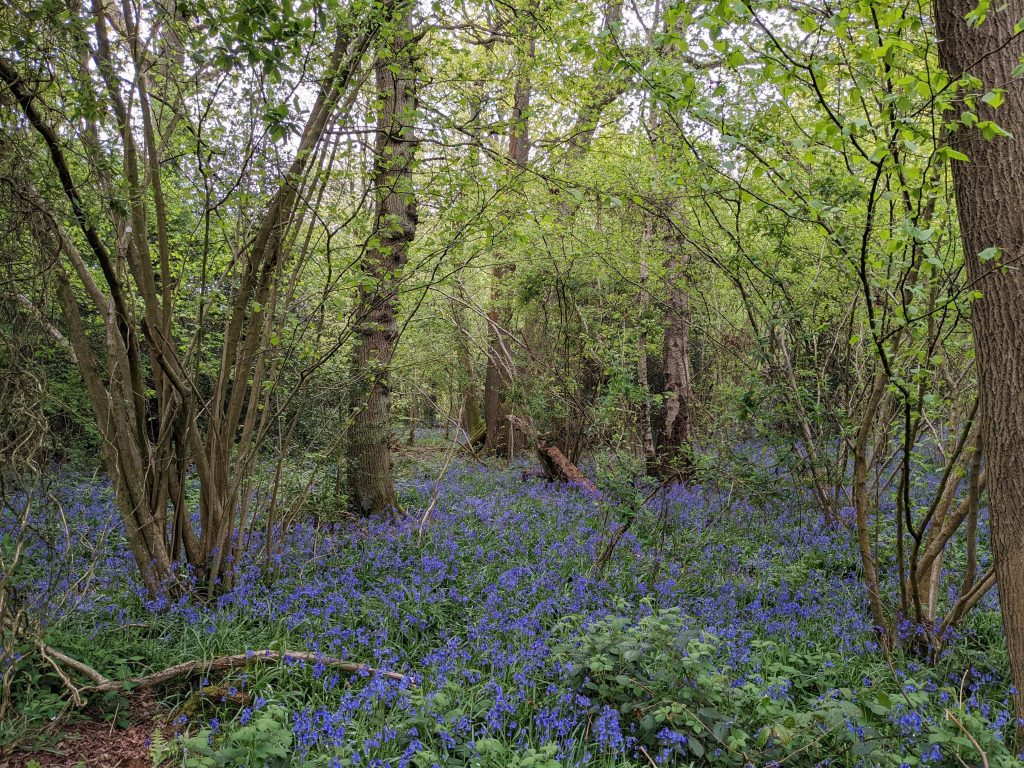
Wildlife Benefits of Coppicing
Most coppicing today is undertaken primarily for the wildlife benefits. One of the main aims of our coppicing in Devilsden Woods is to create suitable habitat for the rare hazel dormice that live there. I’ve never been lucky enough to see a dormouse – they’re nocturnal and hibernate during the winter – but I have seen the Silver-washed Fritillary butterflies that have returned to Happy Valley since coppicing was restarted here a couple of decades ago. And at both Kingswood and Devilsden Woods there are often particularly spectacular springtime displays of bluebells in areas that we have cut the previous winter. Yet another benefit is that trees that have been coppiced often live far longer than they would have done otherwise.
The Importance of Conservation Volunteering
The UK is one of the most nature-depleted countries on earth and we also have some of the lowest levels of nature connectedness – a sense of closeness with other species – and of well-being. Conservation volunteering alone can’t solve the challenges of species loss, climate change and mental health but it certainly has a key role to play and there is a growing body of evidence about the benefits for both nature and people. When the initiative was first established in the 1950s, the emphasis was very much on the environmental benefits but over time there has been increasing recognition of the benefits that volunteering in nature delivers for the individuals taking part, and that certainly matches my own experience.
Personal Journey with TCV
I first got involved with TCV after being made redundant from a stressful deskbound job. My plan was to spend some time doing something that was a complete contrast to my working life but conservation volunteering quickly became so important to me, that I’ve since chosen to work part-time so I can carry on doing it regularly. I have also been inspired to start writing about my experiences and I now publish a Substack called Stories of Co-existence where I write about conservation volunteering and urban wildlife.
Finding Solace in Nature
As I have grown increasingly anxious about politicians’ inability to tackle the nature and climate crisis recently, I’ve found my days in the woods even more essential. I usually return home at the end of a day’s volunteering feeling tired but calmer and far more relaxed than when I set out.
Ruth Bradshaw has been a regular volunteer with TCV Croydon for nearly 15 years and works part-time in environmental policy. Parts of this blog are based on pieces originally published on Ruth’s Substack Stories of Co-existence. You can read her previous posts and sign-up to receive future posts directly here.
Keep up to date with the latest news and activities from The Conservation Volunteers by following us on Twitter, Facebook, LinkedIn and Instagram. You can also sign up to receive TCV’s Greenzine newsletter for more ways to get involved.

